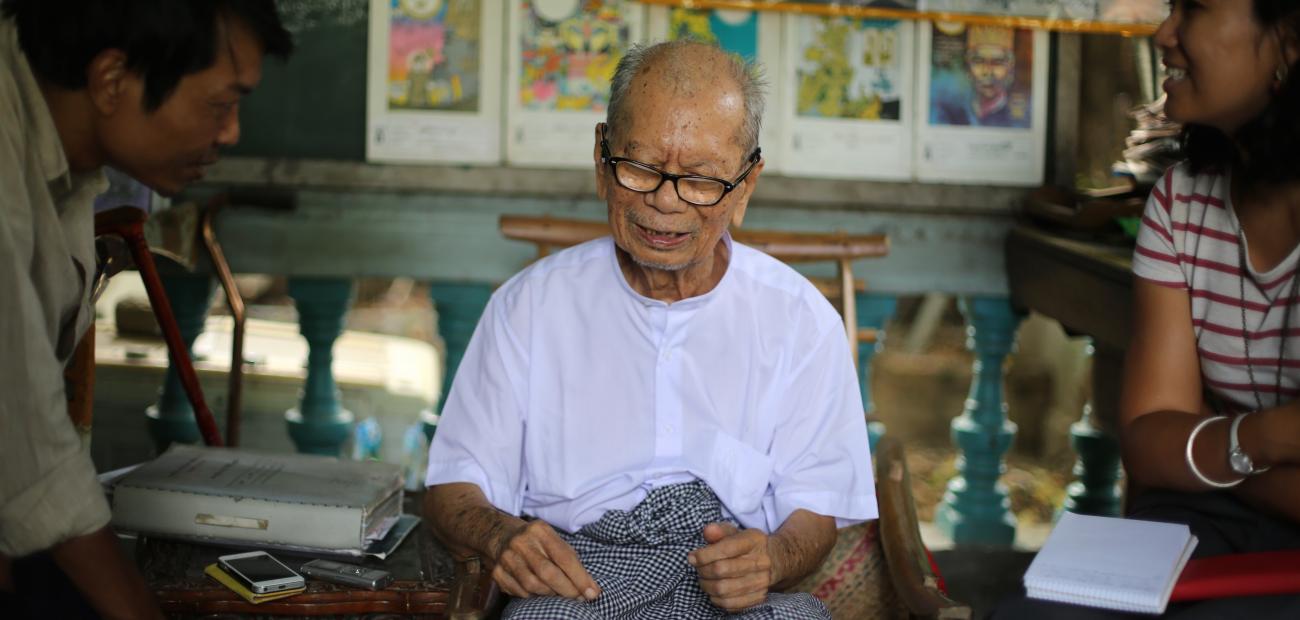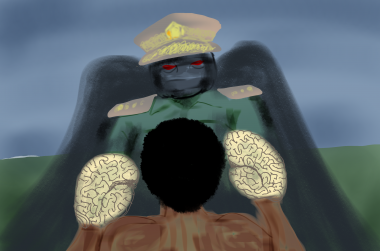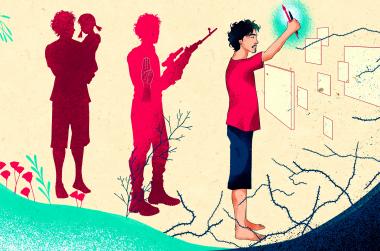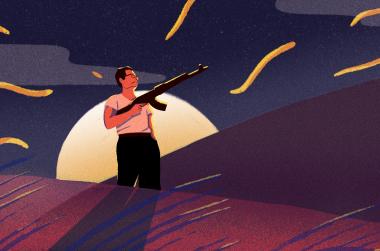Aye Myint squints through spectacles as thick as glass bottles and leafs slowly through his life’s work: hundreds of paintings and illustrations that were a colourful feature of life for many ordinary Myanmar people. These were designs for stamps and bank notes during the rule of former military strongman Ne Win, as well as striking religious images that featured on the cover of a mass-market monthly Buddhist magazine for two decades.
The artist lives in Amarapura near the city of Mandalay, a region famed for its monastic heritage and nearby U Bein bridge, which stretches languidly across Taungthaman Lake while crowds of tourists march across its ageing teak spine.
Aye Myint’s verdant garden is alive with the creative activities of his extended family. Freshly-painted fabrics from his daughter’s textile business are draped across bushes in the yard, while the airy front porch is festooned with the vivid illustrations of famous legends from the magazine covers he painted in his heyday.
He spent seven decades creating artworks that dwelt on love and kindness. Now 86, he is prevented from drawing by his failing sight, but the themes of compassion that run through his work preoccupy him as much as ever.

“Now that I'm an old man, I want to leave my legacy. I was painting up until about four years ago but now I can't even paint with my glasses on.
“During the Second World War I attended a Japanese-run school and I also had a job in the Japanese Railway Department. The outbreak of the war saw painting and design used by commercial businesses more than ever before, in the form of billboards and advertisements. They started off very simplistic at the beginning of the war, but over time they became more sophisticated and there was more room for creativity and colour. It was around this time -- I was 16 -- that I started to learn how to paint.
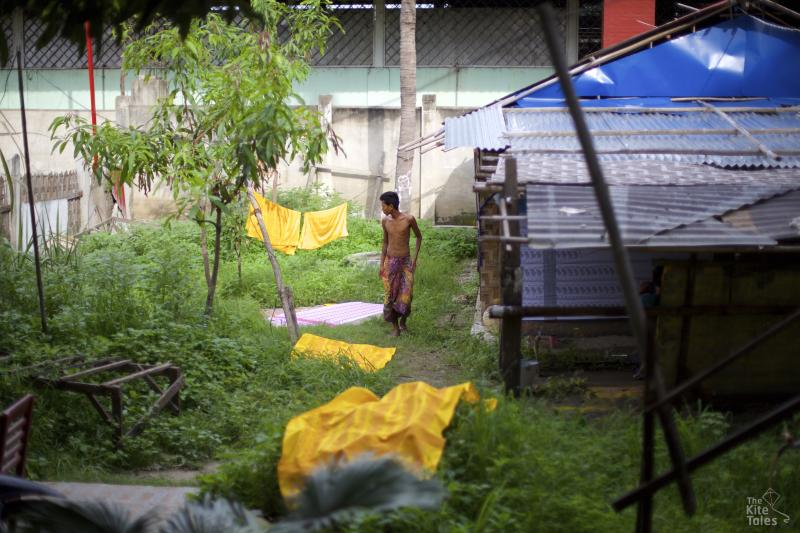
“(In my youth) many adolescents studied leftist ideology. But it really shocked me when I later encountered the cruel and vulgar nature of politics.
“I thought that painting is something that can benefit the masses.
“I was inspired by people like Abbot Shwe Khine Thar, who compiled a book about different types of Myanmar clothing through the ages. Before that, we just assumed the clothes people wore a hundred years ago were the same as those which had been worn a thousand years ago.
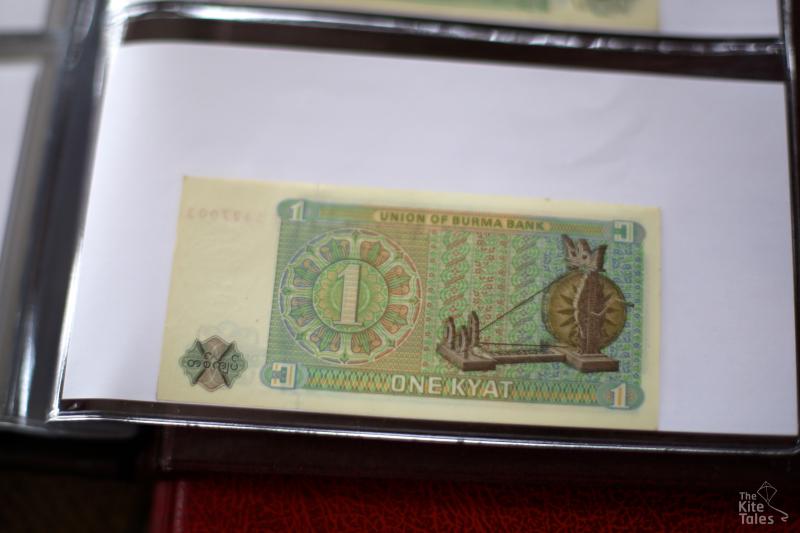
From 1954 to 1977, Aye Myint started working as a designer for the government’s Cottage Industries Department and Saunders Weaving School in Amarapura, where he drew designs for stamps and bank notes. He is particularly proud of his spinning wheel motif for the now-discontinued 1 kyat note.
“Back in those days, such a spinning wheel frame would set you back about 13 Kyats. I was in need of something to present at (a trade fair) so travelled around the Kyaukpataung, but no matter how much money I offered, the spinning wheel owners refused to sell their family heritage. There are still villages today that safeguard such pieces of artistry. But I believe these antiques need to be collected and stored in a more systematic manner than scattered about the countryside.
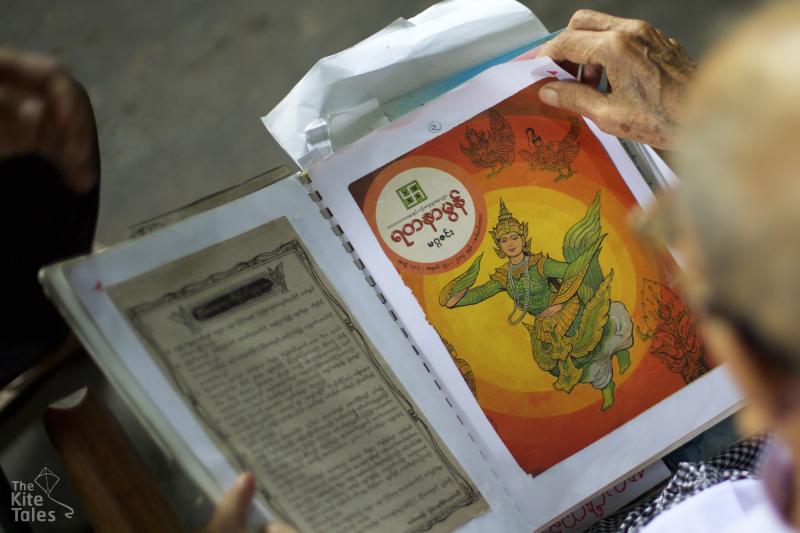
“I painted this back in 2004 to portray love and affection through the images of two mythical flying beasts, part human part bird. The inspiration for this came from a 1960 trip I took to Bagan. In the image, they are fluttering their wings. They have the bodies of humans but the feet of birds and their clothing is reminiscent of the (Bagan) era.
“(During the trip) in 1960, I was still young and I would just stand there and gaze at the extraordinary details of the paintings. They were all so beautiful.”
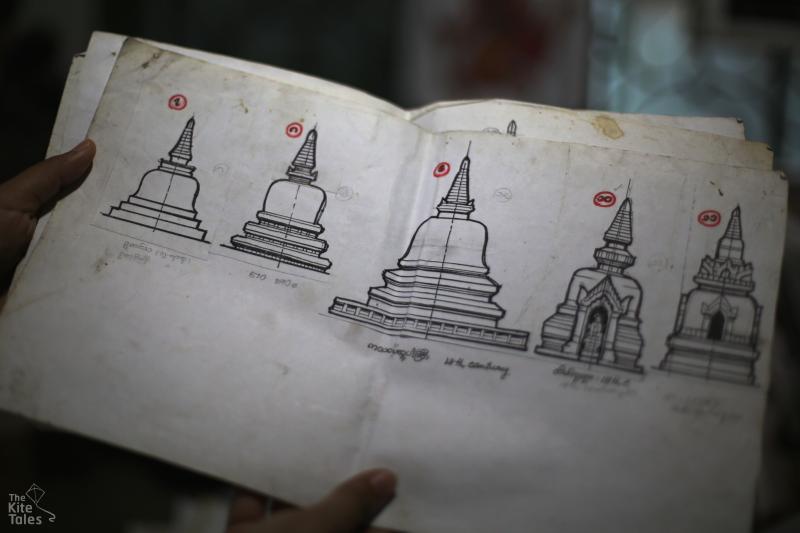
His most cherished possessions are a series of drawing he did of the Bagan temples during another visit to the area in 1971, before the military government embarked on its notorious renovations of some of the pagodas that have threatened the entire site’s chances of World Heritage status (link).
“I know the UN is currently helping conduct research on the Bagan pagodas damaged by the earthquake (in 2016).
“I have 30 sketches of Bagan architecture and I hope they could be of use to those who really want to restore these pagodas. I want these images to be shown.
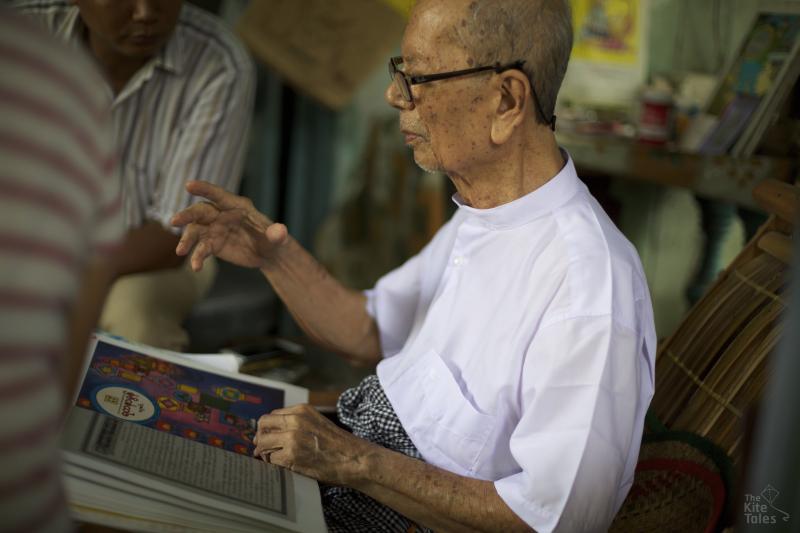
“My desire to focus my painting on the compassion of our great Burmese forefathers came whilst I was searching for a monastery in which live and study. To be honest, the innate nature of compassion, love and kindness is very delicate and ever so important within a family. I believe that if one is Myanmar and Buddhist, it is a good thing if they can paint about the profound spirit of their faith.
“I’d like people to think reasonably. You should not support only your race and belittle others. I wish everyone a long life, and that we all strive to mend our erroneous ways, as I also wish that upon myself.
(Interviewed in September 2016)

